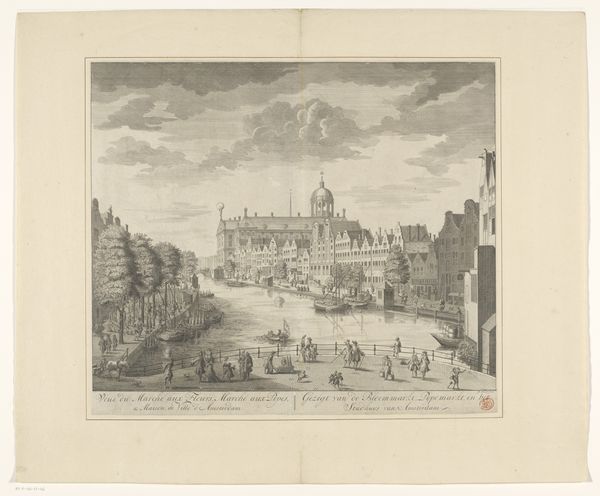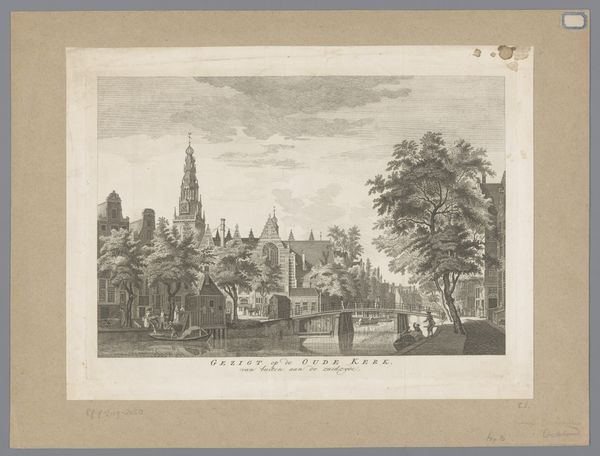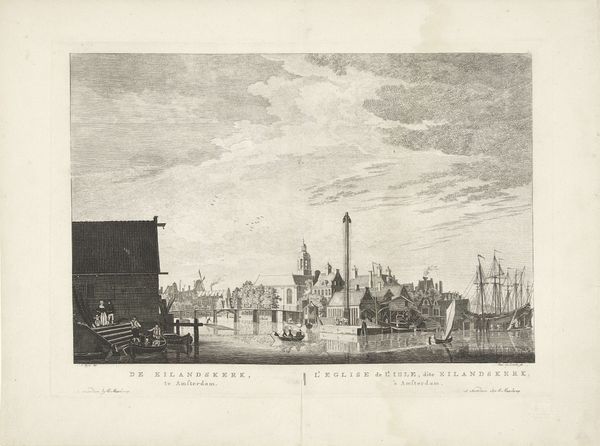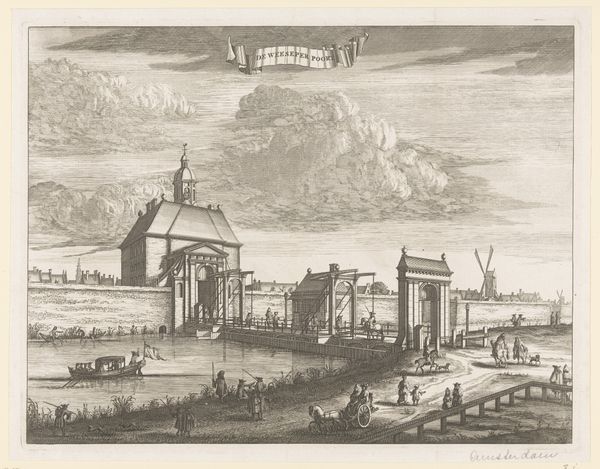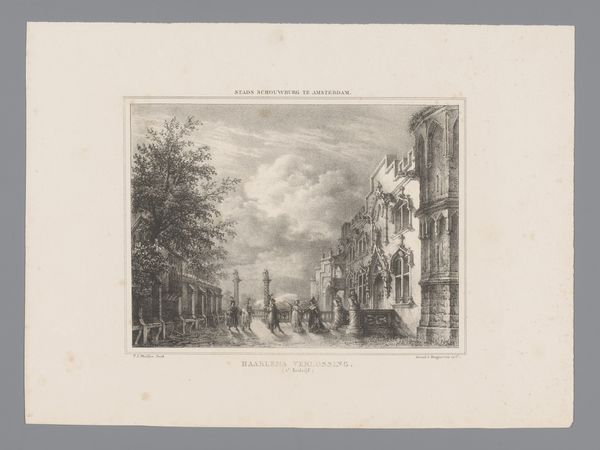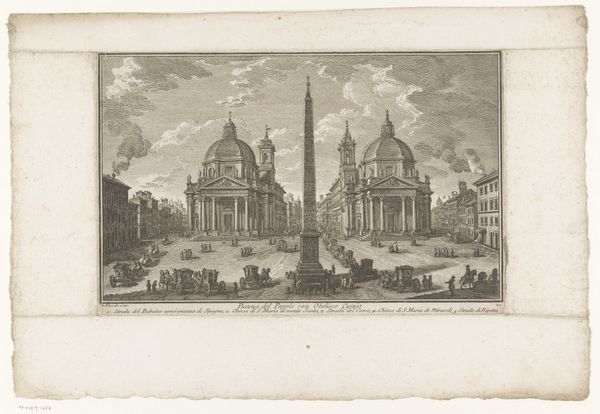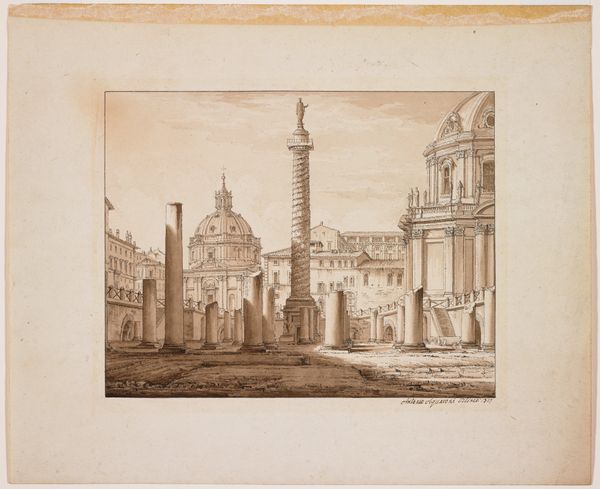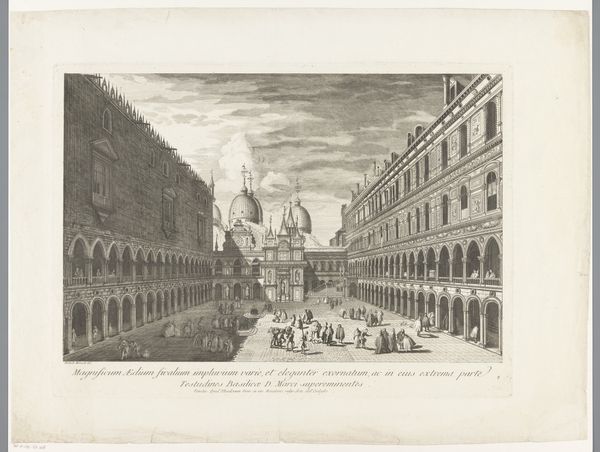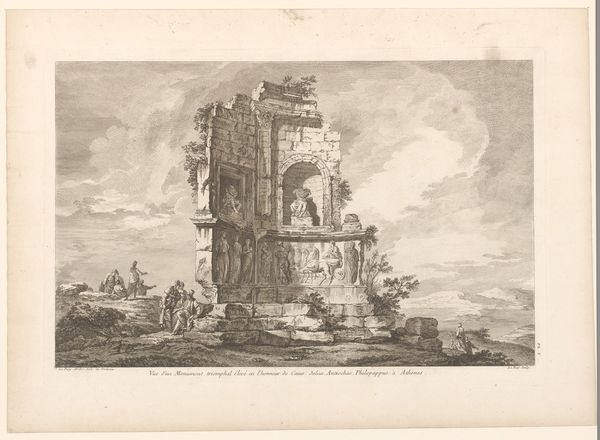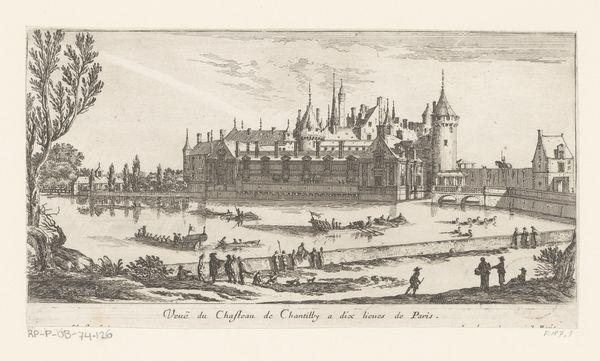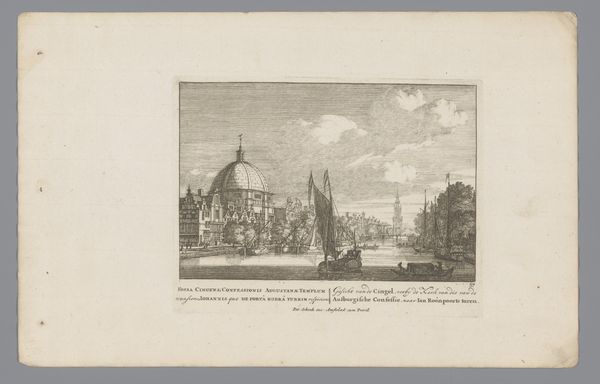
Fantasie stadsgezicht met bouwwerken en sculpturen uit diverse Toscaanse steden c. 1801 - 1803
0:00
0:00
antoniopoggioli
Rijksmuseum
print, engraving
#
neoclacissism
# print
#
landscape
#
cityscape
#
history-painting
#
italian-renaissance
#
engraving
Dimensions: height 590 mm, width 894 mm
Copyright: Rijks Museum: Open Domain
Curator: The meticulous engraving before us is titled, "Fantasie stadsgezicht met bouwwerken en sculpturen uit diverse Toscaanse steden" roughly translating to a fantasy cityscape with buildings and sculptures from various Tuscan cities. Antonio Poggioli crafted it around 1801 to 1803. Editor: An imaginative jumble! The composition feels… unsettling. Different architectural styles and scales collide. What is Poggioli trying to communicate with such spatial disarray? Curator: Its very disarray provides the key to understanding the era. We're witnessing a visual manifesto of Neoclassicism, imbued with the nostalgia and grandeur of the Italian Renaissance. Poggioli creates an idealised panorama, freely mixing signifiers of Tuscan urbanity. Editor: You’re referring to the way the engraving highlights Renaissance architectural motifs in its rendering of a picturesque and clearly idealised landscape. However, doesn't the choice of engraving, a reproductive medium, somewhat democratise this seemingly elite architectural vision? Curator: In its function as a "print," it disseminates this imagery widely, and so we have the convergence of high and low culture in the early 19th century. Semiotically, each element of architecture signifies power, taste and progress of its period, brought together through an engagement with art theory and the aesthetic concept of ‘the beautiful.’ Editor: But let's not overlook the figures at the bottom. What of the commoners relaxing amongst such architectural marvels, juxtaposed with grand architecture and monumental art of historical importance? The people feel… staged, as if accessories to architecture. Curator: Exactly! Their inclusion places urban development squarely into the narrative of societal advancement, while simultaneously highlighting the common citizenry's capacity for enjoying and participating in public and private spaces of cultural enrichment. We have, quite simply, art reflecting societal ideology. Editor: Ultimately, though, I remain struck by the unrealized quality. The light, even in its gradations achieved through fine engraving lines, imparts an ephemeral sense, like a fleeting vision. Curator: It’s as though we're witnessing an architectural dreamscape, where Renaissance ideals meet Neoclassical aspirations, forever captured through the printing press for a rapidly modernising society. Editor: And an astute demonstration that spatial organization – or disorganisation – can powerfully communicate artistic meaning through time.
Comments
No comments
Be the first to comment and join the conversation on the ultimate creative platform.
